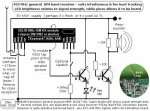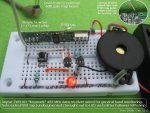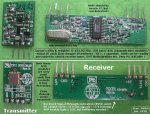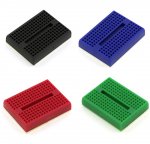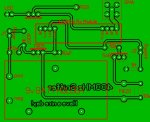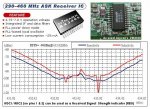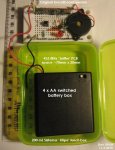I've endlessly mentioned the benefits of being able to "listen in" on ones local 433.92MHz band, but yet again promote the likes of the simple Keymark/Spiriton receiver module for monitoring. With ever increasing band "noise" every 433 MHz user should have one in his toolbox- I've used mine endlessly for 433 MHz data monitoring & appliance activity- it's certainly a near indispensible "bang for buck" item.
Just today this again showed it's worth,this time with a no go neighbours 433.92Mhz wireless door chime (an Arlec DC149 ). These Arlecs use a super-regenerative receiver,which (being a superregen.) radiates a small RF signal even while receiving. It was the work of momments to bring the 433 monitor close to it & hear a suitable increase in background noise,ceasing when the Arlec batteries were removed. The fault turned out to be at the transmitter end...
Mine is still breadboarded (as below) but it may be time to rustle up a PCB & assembly details- anyone interested? Stan.
Just today this again showed it's worth,this time with a no go neighbours 433.92Mhz wireless door chime (an Arlec DC149 ). These Arlecs use a super-regenerative receiver,which (being a superregen.) radiates a small RF signal even while receiving. It was the work of momments to bring the 433 monitor close to it & hear a suitable increase in background noise,ceasing when the Arlec batteries were removed. The fault turned out to be at the transmitter end...
Mine is still breadboarded (as below) but it may be time to rustle up a PCB & assembly details- anyone interested? Stan.
Attachments
-
83.6 KB Views: 137
-
92.8 KB Views: 87

